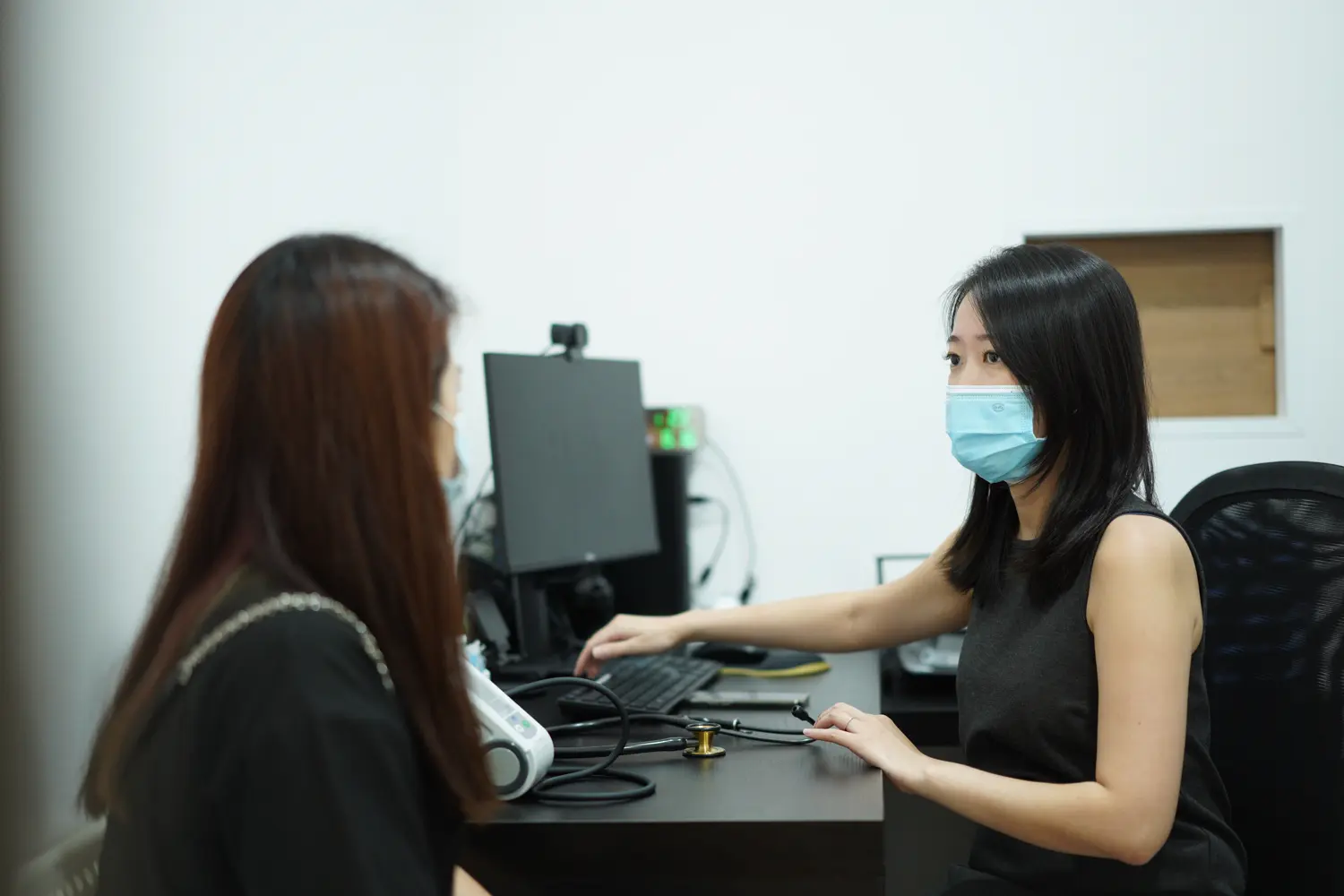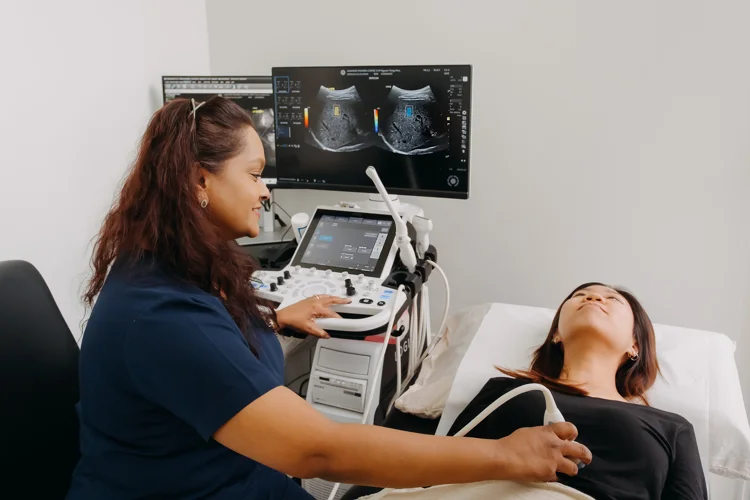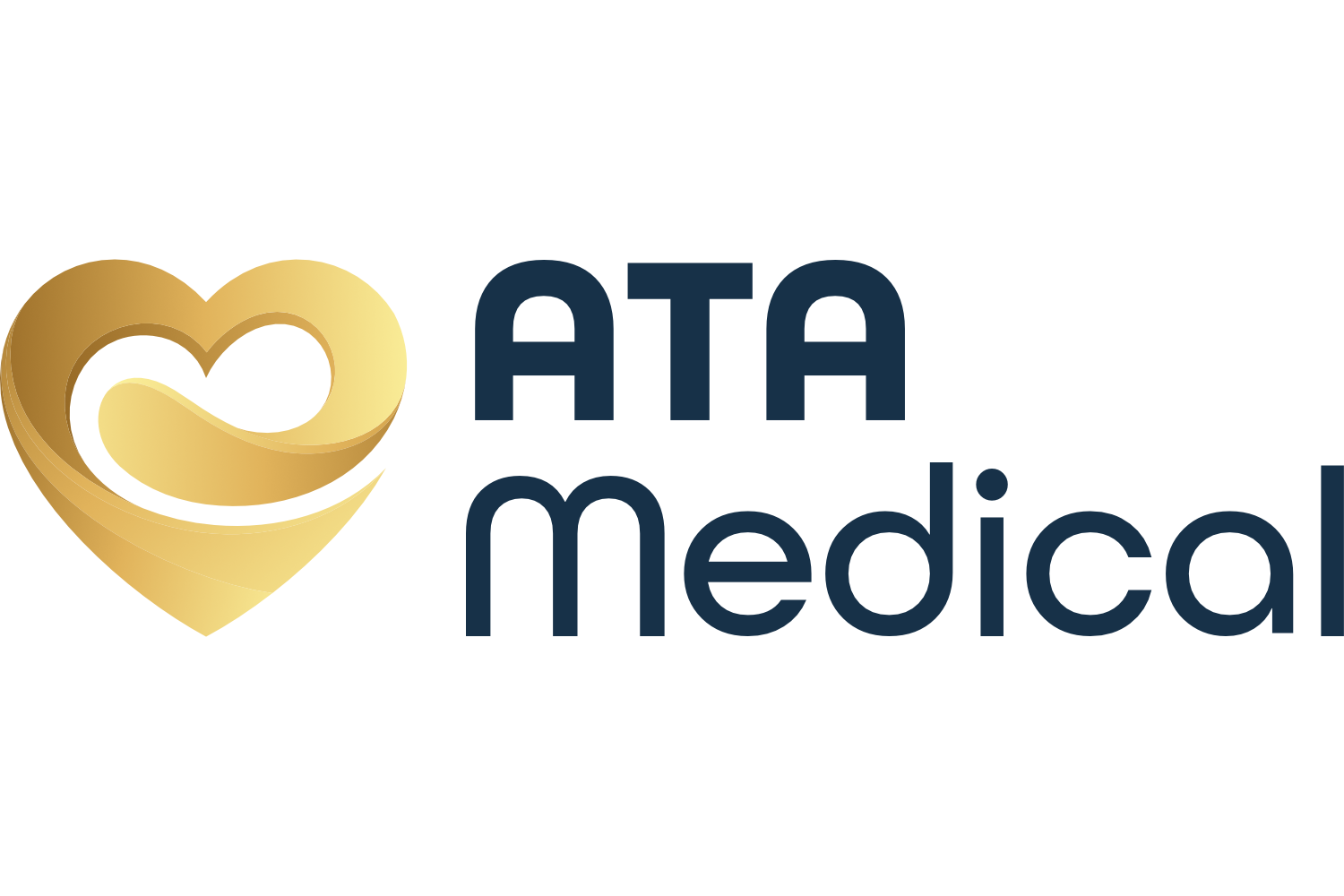What Is a Blood Pressure Reading?
A blood pressure reading reflects the force of circulating blood exerted on the walls of your arteries and serves as a key indicator of cardiovascular health. It is recorded using two numbers:
- Systolic Pressure (Upper Number) – The pressure in your arteries when your heart contracts and pumps blood.
- Diastolic Pressure (Lower Number) – The pressure in your arteries when your heart relaxes between beats.
Blood pressure readings help detect and monitor hypertension, a condition that increases the risk of heart disease, stroke, and kidney problems. Many individuals with high blood pressure do not experience symptoms, making routine screening essential for early detection and timely intervention.

How Is Blood Pressure Categorised?
Blood pressure is measured in millimetres of mercury (mmHg) and written as systolic over diastolic, for example, 120/80 mmHg. According to clinical guidelines in Singapore, blood pressure is classified into the following categories:
| Categories | Systolic Blood Pressure (mmHg) | Diastolic Blood Pressure (mmHg) |
|---|---|---|
| Normal | < 120 | < 80 |
| High-Normal (Borderline) | 130 - 139 | 85 - 89 |
| Hypertension Stage 1 | 140 - 159 | 90 - 99 |
| Hypertension Stage 2 | ≥ 160 | ≥ 100 |
What Is Considered a Healthy Blood Pressure by Age?
Healthy blood pressure ranges generally remain consistent across age groups.
However, slightly higher readings, particularly in adults over 65, may be considered
appropriate depending on individual health status, the presence of other medical
conditions, and the effects of treatments such as medication.
Blood pressure typically begins to rise from around age 50 due to natural changes in the cardiovascular
system. As arteries stiffen with age, the heart must pump harder to
circulate blood, leading to higher pressure. Other contributing factors include
reduced kidney function, hormonal shifts, and long-term lifestyle influences.
When Should You Monitor Your Blood Pressure?
You should consider checking or monitoring your blood pressure if you:
- You are over 18 years old and have not had a recent health screening.
- You are taking medication for high blood pressure or related conditions.
- You have a family history of high blood pressure or cardiovascular disease.
- You experience symptoms such as frequent headaches, dizziness, blurred vision, or chest discomfort.
If your doctor has advised you to monitor your blood pressure at home, it is important to follow this guidance as it helps track your treatment progress and supports informed adjustments if necessary.

Tips for Monitoring Your Blood Pressure at Home
To measure your blood pressure accurately at home, follow these tips:
- Use a validated upper-arm digital monitor (one that has been clinically tested for accuracy).
- Measure at the same time each day, ideally in the morning before eating or taking medication.
- Take two to three readings, one minute apart, and record the average.
- Sit quietly for at least five minutes before measuring.
- Avoid speaking or moving during the reading.
It is important to follow your doctor’s instructions on when and how to measure your blood pressure at home. This ensures that the readings collected are reliable and useful for monitoring your health and guiding your treatment plan.
What Can Affect Your Blood Pressure Reading?
Many factors can affect your blood pressure reading, even over a short period. These include physiological, behavioural, and environmental influences:
- Body Position and Posture – Crossing your legs, unsupported arms, or slouching may lead to inaccurate results.
- Emotional State – Feelings of stress, anxiety, or pain can cause a temporary increase in blood pressure.
- Recent Physical Activity – Exercise or exertion shortly before measurement can elevate your reading.
- Dietary Intake and Substances – Caffeine, alcohol, and tobacco use can influence blood pressure levels.
- Time of Day – Blood pressure follows a daily rhythm and may vary between morning and evening.

For more accurate and consistent readings, sit quietly for at least five minutes before measurement, avoid caffeine or smoking for 30 minutes beforehand, and keep your arm supported at heart level with both feet flat on the floor.
What Should You Do if Your Reading Is High?
If your blood pressure reading is elevated or high, you should:
- Repeat the measurement after a few minutes to confirm the result.
- Consider recent activities or stressors that may have affected the reading.
- Schedule a consultation with your doctor if high readings persist.
- Make lifestyle changes such as reducing salt intake, exercising regularly, limiting alcohol consumption, and managing stress.
In some cases, your doctor may recommend further investigations, medication, or regular monitoring depending on your overall health and risk factors.
Why Choose ATA Medical?








Making a Difference Together
At ATA Medical, we strive to make a meaningful impact on every patient's health. With over 120,000 patients served, we are dedicated to fostering trust and enhancing well-being across our community.
Patients
Health Screening Tests
Corporate Screenings
Delivering Care Patients Appreciate
What to Expect
FAST RESULTS
We strive to deliver your results within 7 working days.
MINIMUM WAITING TIME
Our patient-oriented processes ensure your waiting time is kept to a minimum.
Friendly Service
Service is a top priority for us at ATA Medical.
Email Us at hi@atamed.sg
for More Information.
Book Your Health Screening With Us at 88770326.

